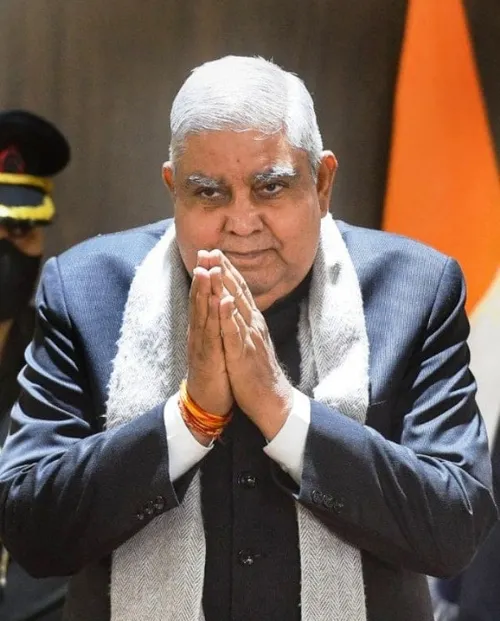India is at a pivotal moment in its agricultural journey. As the backbone of rural livelihoods and a crucial pillar of our economy, agriculture is now much more than a food security imperative. It is central to national growth, sustainability and global competitiveness. The sector is rapidly evolving, spanning food processing, biofuels, agri-tech and organic inputs, moving towards a future shaped by precision, sustainability and empowered farmers.
This transformation requires more than incremental change. It demands a systems-level approach anchored in policy vision, private innovation and technology-driven empowerment.
Soil health: Investing in the first mile
Soil degradation is one of the most urgent threats to India’s agricultural future. Nearly 30 per cent of our land is degraded, according to the National Bureau of Soil Survey and Land Use Planning, which undermines productivity, farmer incomes and long-term food security. Balanced fertiliser use, including organic and micronutrient-based approaches, is not just good practice—it is essential. The government’s Soil Health Card initiative, which has reached over 140 million farmers, is an important step. The 2025 Union Budget’s focus on diversifying subsidies and encouraging organic inputs is also significant.
Optimising urea use, improving phosphorus and potassium application and promoting indigenous crops like millets and makhana will drive both sustainability and nutrition. These choices position India well in a global market that increasingly values clean, traceable and high-nutrition food systems. Edible oil self-reliance is a clear example. India spent over $18 billion on edible oil imports in 2023. Supporting domestic oilseed cultivation through R&D, infrastructure and price mechanisms is a strategic opportunity.
Precision agriculture: Data as the new fertiliser
Precision agriculture is no longer a distant goal—it is a necessity. AI, drones, IoT and satellite monitoring are transforming how Indian farmers plan crops, manage pests and use inputs. Studies by the National Academy of Agricultural Sciences show that AI interventions can boost yields by 20 per cent and reduce input costs by 15 per cent. This digital revolution is also inclusive. Platforms like AgriStack, Kisan e-Mitra and UFSP are bringing advanced technology to small and marginal farmers, who make up over 82 per cent of India’s agrarian community.
The IndiaAI Mission can be a powerful accelerator, but to realise its full potential, India must benchmark against global best practices, foster civil society engagement and facilitate technology transfer to localise scalable solutions. As a young and ambitious nation, our focus should be clear: adopt, adapt and normalise precision agriculture.
Climate resilience: Mitigating risk, maximising yield
Climate volatility—frequent droughts, floods and heatwaves—is now embedded in Indian agriculture. Building resilience is not optional. The focus must shift toward adaptive technologies: stress-tolerant seed varieties, smart irrigation systems and agroforestry.
Government efforts like the National Mission on Sustainable Agriculture are paving the way, but scaling up requires robust private sector participation. Progress is visible. Over 10 million hectares now benefit from micro-irrigation, and more than a million farmers have adopted agroforestry. These are not just climate responses—they enhance productivity and income.
Sustainable energy: Greening the agri-industrial chain
Agriculture’s energy intensity, especially in fertiliser manufacturing, calls for urgent sustainability action. India must invest in energy-efficient production and integrate renewable energy into the agri-supply chain.
The national goal of 500 GW solar capacity by 2030 is bold but feasible. Innovations like floating solar farms, AI-enabled wind mapping and rural grid integration can make agriculture a net contributor to the clean energy transition.
Empowering the farmer: Capital, knowledge and opportunity
True transformation depends on empowering farmers—through access to capital, markets, technology and income diversification. The 2025 budget’s $2 billion agricultural credit allocation is significant. What matters now is last-mile delivery, ensuring capital reaches the right hands via Direct Benefit Transfers, which have proven efficient at scale.
Agri-extension networks—driven by public institutions and private players—must be strengthened. Allied sectors like dairy, poultry and fisheries already support over 70 million households, helping buffer against seasonal income shocks. Innovation must not only be developed but delivered, adopted and scaled.
Way forward: A shared commitment to agricultural transformation
India’s agricultural transformation cannot be driven by policy alone. It must be co-created through sustained collaboration among government, industry, farmers, academia and civil society. The shift must be from short-term fixes to long-term strategic partnerships. As an investor and stakeholder in this ecosystem, I see Indian agriculture not just as an economic engine, but as a foundation for inclusive and sustainable development.
The challenge is not merely to feed over a billion people—it is to embed prosperity, resilience and hope into the heart of rural India. Our global agricultural relevance will be defined not by how much we produce, but by how we produce it. Sustainability is no longer a choice—it is the cornerstone.
The decisions we take today—on soil, climate, technology and farmer well-being—will shape India’s place in the global agri-value chain. This is our collective call to action.
The author is Promoter & Chairman, Matix Fertilisers and Chemicals Ltd.
Published on May 24, 2025
Anurag Dhole is a seasoned journalist and content writer with a passion for delivering timely, accurate, and engaging stories. With over 8 years of experience in digital media, she covers a wide range of topics—from breaking news and politics to business insights and cultural trends. Jane's writing style blends clarity with depth, aiming to inform and inspire readers in a fast-paced media landscape. When she’s not chasing stories, she’s likely reading investigative features or exploring local cafés for her next writing spot.






